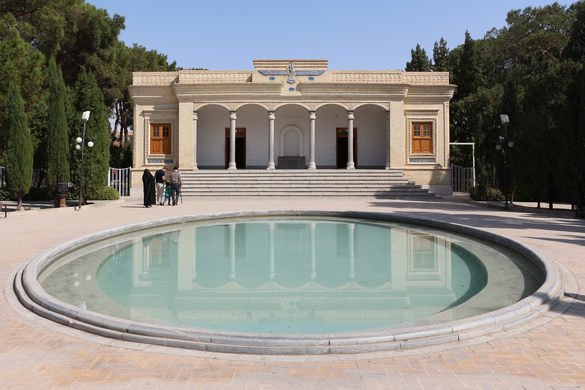Will Bhika Behram well dry up like baoli at Red Fort?
On Tuesday, Parsi-Zoroastrians met officers of the Mumbai Metropolitan Region Development Authority (MMRDA) to discuss their concern that trench-digging for the Colaba-SEEPZ underground Metro railway, which MMRDA is building, will dry up their sacred Bhika Behram well.
According to the project plans, the railway will pass under the Veer Nariman Road, just 15 metres away from three-centuries-old well in Churchgate. The trust, which maintains the well, appointed a geologist to find out whether the work will affect the water level in the well. The geologist’s findings were ominous: digging of a deep trench affects the water table in the vicinity and since the well is just a few metres away from the proposed tunnel, it could dry up. As a solution, the geologist suggested that the tunnel should be shifted south, to travel under the Oval Maidan.
At last week’s meeting, members of the well trust were told that the alignment of the railway will not be changed, but MMRDA officials said that concrete casings will be placed on the walls of the tunnels immediately after the digging work is completed.
The casings, Metro engineers said, would ensure that water from the well does not empty into the tunnel, but members of the well trust and the geologists are not convinced that this will prevent the well from going dry.
“It will take three or four days for the casings to be constructed and the water table around the well is shallow, so we are worried that the water level in the well will be affected,” said PS Ramakrishna, the geologist who was commissioned by the trust to conduct the study.
In his report, the geologist said that when a subway under the road junction near the Metro cinema was being constructed, he was asked to study the effect of the digging on water levels in the Dhobi Talao area which has a number of wells. “There were a number of pumps installed in the vicinity to pump out the water and it did affect the water level of a number of wells over here. While the BMC can replace that shortfall in the requirement, it is not possible to replace the holy water in Bhika Behram well,” Ramakrishna said.
Apart from the examples of what happened during the digging for the Metro cinema subway, there is a recent case of a Baoli, or stepwell, in Delhi’s Red Fort, that dried up apparently after tunnels were dug nearby for laying a new line for the city’s expanding Metro rail system.
According to historian Sohail Hashmi, who conducts heritage tours around the city, the step well, known as Baoli Hayat-e-Bakhsh Bagh — the biggest of the 20 such wells in and around Delhi — is believed to have been built during the Mughal rule. Hashmi said that it was possible that the well had been built earlier and the Mughals constructed a larger and more elaborate structure.
Hashmi said that Delhi’s topography slopes east from the Aravallis, with the hills forming a watershed with the Yamuna River at its centre. Streams, underground and overground, flow from the hills towards the river.
About four years ago, the army — which had been in the Red Fort since the colonial regime turned its gardens into military barracks — handed over the well to the Archaeological Survey of India for preservation. Hashmi said he visited the well soon after this handover. “I have seen a stream flow inside the well; the water was crystal clear,” said Hashmi.
Last year, when digging started to lay down the ‘Heritage Line’ — which will connect the old city to New Delhi — the well dried up. Hashmi suspected that when trenches were dug for the Metro rail, engineers could have cut away the underground stream that fed the well. “The well had enough water to maintain the gardens inside the fort,” said Hashmi. Will the Bhika Behram well face a similar fate?
Published on Hindustan Times





